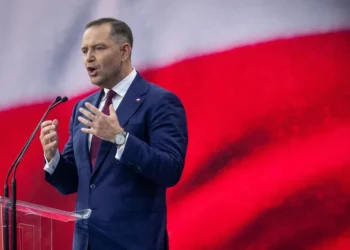The WarRoom posse knows that the latest chatter from the Treasury is crystal clear: President Trump’s team is running circles around the usual Beltway chaos. On Thursday’s WarRoom, Steve Bannon sat down with Joe Lavorgna, a Treasury insider, and the conversation reads like a blueprint for fiscal badassery.
Quick Clip:
JOE LAVORGNA: Since April, tariffs have brought in nearly $100B.
Consumer prices? Up less than 1% annualized.
Auto prices down 2%. Apparel flat. No inflation hit.@Lavorgnanomics pic.twitter.com/BduVuQjTcW
— Bannon’s WarRoom (@Bannons_WarRoom) August 14, 2025
At the heart of it: tariffs, spending, and deficits — and how the administration is quietly steering the ship toward stability while the political theater continues on Capitol Hill.
LAVORGNA laid it out in plain English: "Since April, tariffs have brought in nearly $100 billion. Consumer prices? Up less than 1% annualized. Auto prices are down 2%. Apparel? Flat. No inflation hit.” That’s right: record-breaking tariff revenue is flooding the Treasury without trickling down to consumers. While critics predicted pain at the register, Americans are still seeing normal prices at the grocery store, the mall, and the auto lot. This is the kind of economic wizardry Washington pundits don’t want to talk about.
QUICK CLIP:
JOE LAVORGNA: The Biden administration juiced spending right before the election.
Now spending is slowing, deficits are nearly level with last year.
Strong tariff revenues in Aug/Sep could bring even more good news.@Lavorgnanomics pic.twitter.com/gLzMgjSnOj
— Bannon’s WarRoom (@Bannons_WarRoom) August 14, 2025
But the conversation wasn’t just about tariffs. Lavorgna made it clear that the bigger battle is fiscal discipline. Washington is still playing the same old game of deficit spending — and the administration knows it. Lavorgna stressed the importance of rescissions, impoundments, and pocket-level budget enforcement to curb runaway spending. "The situation is still out of control and has to be addressed,” he said. And Trump, with his seasoned understanding of how the system ticks, isn’t just watching — he’s taking control.
They dissected the numbers: core goods prices barely budged, and services have risen modestly, meaning the average American isn’t feeling the bite. Even with the record tariff revenue — a figure expected to hit $350 billion for the year — consumer prices remain surprisingly resilient. "Could it hit later?” Bannon asked. Lavorgna shrugged: possible, but highly unlikely. The math doesn’t lie: the revenue surge is massive, yet inflation remains contained. That’s a win for the administration and, crucially, for Main Street.
The Treasury team is also laser-focused on the deficit. Lavorgna laid out the numbers in stark terms: the pace of spending has slowed significantly compared to last year. If current growth trends continue, the administration is on track to bend the deficit curve toward 3–3.5% of GDP. And this isn’t just theory — it’s backed by revenue gains from economic growth, strategic tariffs, and the "one big, beautiful bill” fueling capital equipment investments. The forward-looking strategy isn’t about optics; it’s about putting real dollars into productivity and lowering costs for Americans.
Affordability, Lavorgna noted, remains the mantra. Rising interest rates have hurt housing affordability, but supply-side improvements and lower inflation pressure are set to make life easier for Americans. President Trump’s policies are strategically engineered to expand supply, raise living standards, and keep consumer wallets intact. The administration isn’t reacting — it’s orchestrating.
And then there’s the political angle: Washington insiders want to jam through omnibus spending bills that balloon deficits, but Trump has the institutional savvy to push back. Lavorgna emphasized that the president now has the experience, the numbers, and the Treasury team to counteract runaway spending, keeping an eye on fiscal reality while others play games.
Bottom line: tariffs are bringing in unprecedented revenue, deficits are being reined in, and consumer prices are stable. President Trump isn’t just maintaining order — he’s building a foundation for what Lavorgna calls a "golden age” of fiscal responsibility and economic growth. For anyone watching closely, the message is clear: Washington may be a circus, but Trump’s Treasury is the ringmaster nobody expected, quietly winning while everyone else argues about politics.
For a fuller context, watch the entire conversation:



![Bannon’s WarRoom, Show Clip Roundup 8/26/2024 [AM]](https://warroom.org/wp-content/uploads/2024/08/Bannonface-350x250.jpg)

![Bannon’s WarRoom, Show Clip Roundup 11/7/2024 [AM]](https://warroom.org/wp-content/uploads/2024/11/WarRoom-Logo-75x75.jpg)